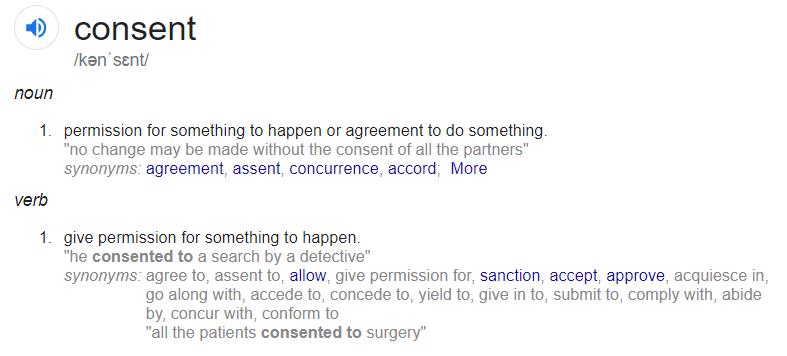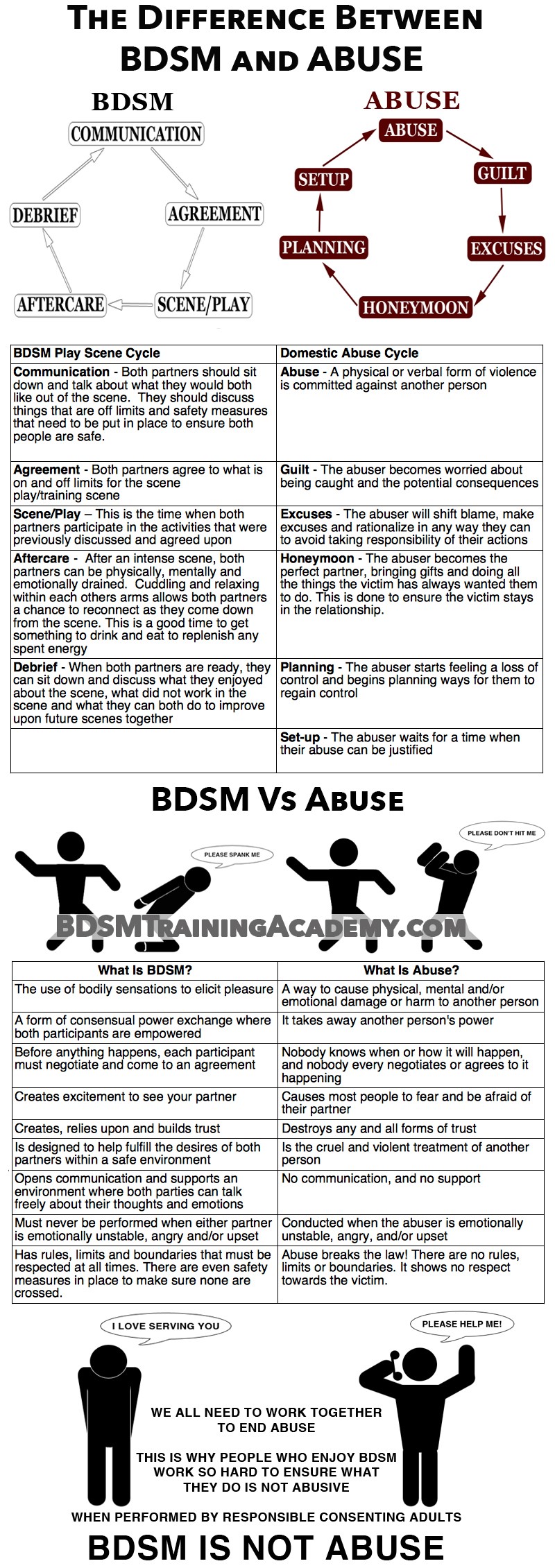There’s plenty to discuss around the topic of BDSM vs Abuse.
However, the core difference revolves around one simple idea – consent…

Yes, Mr. X crying because he’s being spanked REALLY hard, but he’s consented to it during the negotiation phase. BUT, should he wish to cease play (for any reason), all he has to do is say his safe word. His play partner will immediately stop and see to any emotional or physical issues. When these problems are addressed, it is up to Mr. X if he wants to continue or not (and his partner respects this choice).
This is consent.
However…
Ms. Y is trying to have anal sex for the first time. There is considerable pain and she asks her partner to stop … but they don’t.
This is abuse.
Another way to look at it…
“One word will stop BDSM play. A million words will not stop abuse.”
FOUNDATION OF A LARGER MINDSET
Yes, we have consent, but there’s more to it if you want to be a responsible BDSM practitioner or kinkster.
I used the word “negotiations” earlier. Negotiations (or we can just call it pre-scene communication). All participants discuss their limits (what they will do, are willing to explore, and won’t do) – this can be anything from a simple “yes” or “no” all the way to a scaling system of 0 to 10 (0 being a hard limit).
When you respect someone’s limits, it builds trust. With this trust, you are able to explore deeper into your kinky desires.
NEXT, SSC
This stands for Safe, Sane, Consensual.
SAFE = All practices but be carried out knowing the risks to the mind and body (and take preventative measures not to do lasting harm and minimize those risks). Example, when doing Japanese rope tying, you need to understand human anatomy and avoid nerve damage.
SANE = All participants need to be aware of not only the risks, but also understand the difference between reality versus fantasy. The section also means you shouldn’t practice BDSM while drunk or high (you need to be completely aware of what’s going on).
SIDE NOTE: “Subspace” is the term used when the submissive is experiencing a “high” from their body’s chemicals and environment. They’re not always able to make rational decisions or give clear communication.
Dom/mes need to be aware of the signs and NEVER stray from the negotiated terms while their partner is in subspace. Sometimes, if the submissive goes in too deep, it’s wise to stop play altogether (even if they haven’t said a safe word).
CONSENSUAL = Everyone has agreed to borders, limits, safe words, what will happen in a scene, etc. If people change their minds, re-negotiation must take place (even mid-play, but it can be as long or short of a conversation as people need).
Learn more here…
What is a Safe Word? Learn the Basics of Kink Communication
FINALLY, RACK
There’s a lot of info on the difference between SSC and RACK (Risk Aware Consensual Kink), but we will get into that a different day. The main idea is to have an awareness of any possible issues with higher risk activities within the BDSM sphere. It’s also a philosophy that nothing in the kink world is truly “safe” and all you can do is minimize the danger.
DON’T FORGET AFTERCARE
BDSM scenes should always end with aftercare – the submissive/bottom is physically and emotionally tended to and a post-play discussion should happen, so participants know what worked, what could be changed, etc.
Learn more here…
BDSM Aftercare 101 – Ways to Care for Your Sub After Play
MORE DIFFERENCES…

CLOSING
I hope the difference is clearer now. Also, remember, even if your partner has been using safe BDSM practices, even one occurrence of not adhering to the basic rules, is abuse and should not be excused or tolerated.
How do you negotiate your scenes? What safe words do you use? Share in the comments!


